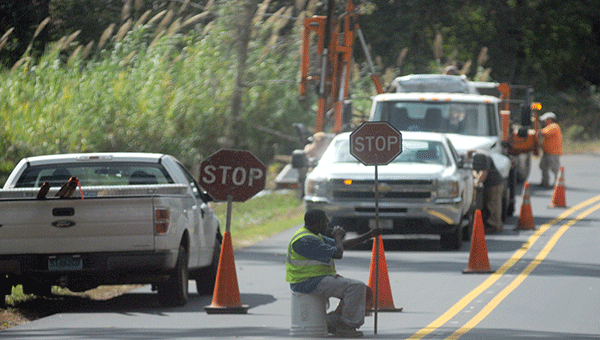County Road 7 construction set for June
Published 5:27 pm Friday, March 2, 2018
One of Butler County’s most heavily traveled roads will receive a much-needed facelift this summer.
The northern end of County Road 7–specifically, the section extending from Highway 10 north to the Butler-Wilcox County line–will be totally resurfaced, widened by one foot on each side, striped and installed with a reflective system as a part of Butler County’s final Alabama Transportation Rehabilitation and Improvement Program (ATRIP) project.
ATRIP is a Department of Transportation-administered federal aid highway program that funds up to 80 percent of construction of important roadway projects around the state.
Since the program began in 2012, ATRIP has provided approximately $10 million in funding for roadway projects in Butler County.
According to Butler County commissioner Joey Peavy, County Road 7’s status as a major collector road grants it eligibility for an ATRIP project, though major collector roads only comprise about 30 percent of Butler County’s roadway system.
The distinction between a major and a minor collector road is often a hazy one, though generally major collector roads are longer roads with higher speed limits, have higher average traffic and have more travel lanes than their minor collector road counterparts.
“The majority of the roads in our county are minor collector roads, which we get very little funding for,” Peavy said. “But major collector roads are classified through the state, and these are the ones that fall under the ATRIP program.
“And if you see a road being paved in the county, that’s because we got some type of funding. The county does not have the funds to go out and resurface minor collector roads. So ATRIP helps, but it doesn’t help the majority of the people; that’s the bad thing about it.”
The County Road 7 project is slated to begin in June, though it’s unknown exactly how long it will take before it’s completed. Though Peavy suspects that the often-unpredictable summer weather will play a part, he estimates that it could be finished in less than a month.
The June project also signifies the end of the current phase of ATRIP projects, though Peavy is hopeful of legislation gestating in Alabama Congress that could make meaningful change for Butler County’s network of roads.
The aforementioned proposed bill, ATRIP 2, would focus specifically on minor collector roads, and Peavy said that it could be a real game-changer for rural counties, specifically for areas such as Stinson Road, which is a minor collector road whose traffic often rivals, if not surpasses, that of major collector roads.
“We’re the counties that don’t have the economic development, the jobs or the tax base that a lot of larger counties do,” Peavy said. “They don’t really need a lot of funding because they’re self sustaining. The smaller counties like us–that are just on the cusp of not having enough revenue to be able to do what we want to do–have just enough to keep everything afloat.
“We’re not in bad financial shape at all; in fact, we’re in great financial shape. But we’re like a blue-collar family. We’re paying all of the bills and we don’t have a lot of credit card debt, but there’s very little left at the end of the day to eat at McDonalds on.”






